
AZ-500: Microsoft Azure Security Technologies
PDFs and exam guides are not so efficient, right? Prepare for your Microsoft examination with our training course. The AZ-500 course contains a complete batch of videos that will provide you with profound and thorough knowledge related to Microsoft certification exam. Pass the Microsoft AZ-500 test with flying colors.

Curriculum for AZ-500 Certification Video Course
| Name of Video | Time |
|---|---|
 1. Azure Quick Overview |
19:31 |
 2. Azure Free Trial Account Creation |
07:11 |
| Name of Video | Time |
|---|---|
 1. Lecture: Defense in Depth |
01:55 |
 2. Lecture: Security Layers |
05:50 |
 3. Lecture: Compliance and Security Requirements |
07:40 |
| Name of Video | Time |
|---|---|
 1. Lecture: Azure Active Directory (AD) Overview |
03:12 |
 2. Demo: Create Azure AD Tenant |
05:09 |
 3. Demo: Move Subscription to another Directory |
03:39 |
 4. Demo: Create Users and Groups |
05:12 |
 5. Demo: Self-Service Password Reset |
03:29 |
 6. Lecture: AD Connect Overview |
04:49 |
 7. Demo: Implementing AD Connect |
05:45 |
 8. Demo: Monitoring with AD Connect Health |
03:53 |
 9. Lecture: SSO and MFA |
03:12 |
 10. Lecture: Service Principals |
01:40 |
 11. Demo: Create a Service Principal |
03:12 |
 12. Demo: App Registration |
05:52 |
 13. Lecture: Identity Protection |
03:01 |
 14. Demo: Configure Identity Protection |
06:56 |
| Name of Video | Time |
|---|---|
 1. Lecture: Privileged Identity Management (PIM) Overview |
07:59 |
 2. Demo: Configure Azure PIM |
08:25 |
 3. Demo: Assign Resource Roles (RBAC) |
06:22 |
 4. Demo: PIM Role Activation |
05:45 |
| Name of Video | Time |
|---|---|
 1. Lecture: Network Overview |
03:33 |
 2. Demo: Create VNets and Subnets via the Azure Portal and PowerShell |
06:43 |
 3. Demo: Configure User-Defined Routes and VNet Peering |
05:55 |
 4. Lecture: Network Security Overview |
5:00 |
 5. Lecture: Network Security Groups (NSGs) |
7:00 |
 6. Demo: Create and Configure a NSG |
03:42 |
 7. Lecture: Azure Load Balancing Services |
7:00 |
 8. Demo: Create and Configure an Azure Load Balancer |
8:00 |
 9. Demo: Configure App Gateway |
8:00 |
 10. Lecture: Azure Firewall |
3:00 |
 11. Demo: Configure Azure Firewall |
21:38 |
 12. Lecture: Distributed Denial of Service (DDoS) |
05:24 |
 13. Demo: Configure DDoS |
03:20 |
 14. Demo: Network Watcher |
12:29 |
| Name of Video | Time |
|---|---|
 1. Lecture: Virtual Machines (VMs) Overview Part 1 |
05:01 |
 2. Lecture: VMs Overview Part 2 |
02:16 |
 3. Demo: Create a VM |
13:53 |
| Name of Video | Time |
|---|---|
 1. Demo: Install Docker and Git for Windows |
04:13 |
 2. Demo: Prepare Application for Azure Kubernetes Service |
04:26 |
 3. Demo: Create Azure Container Registry |
07:07 |
 4. Demo: Run Application on Kubernetes |
08:12 |
 5. Demo: Create Kubernetes Cluster |
07:00 |
| Name of Video | Time |
|---|---|
 1. Lecture: RBAC Overview |
05:28 |
 2. Demo: Implement Role-Based Access |
03:27 |
 3. Lecture: Azure Policy |
01:12 |
 4. Demo: Implement Azure Region Policy |
03:24 |
 5. Demo: Subscription Policies |
06:19 |
 6. Lecture: Azure Resource Locks |
01:17 |
 7. Demo: Implement a Resource Lock |
01:52 |
| Name of Video | Time |
|---|---|
 1. Demo: Azure Monitor and Alerts |
13:12 |
 2. Lecture: Log Analytics |
05:36 |
 3. Demo: Log Analytics |
23:18 |
 4. Lecture: Azure Security Center Overview |
02:43 |
 5. Demo: Prevent and Respond to Threats in Azure Security Center |
11:27 |
| Name of Video | Time |
|---|---|
 1. Lecture: Azure SQL Services |
04:00 |
 2. Demo: Creating an Azure SQL Database |
09:09 |
 3. Lecture: Design Auditing and Caching Strategies |
04:42 |
 4. Demo: SQL Long Term Backup Retention |
01:54 |
 5. Lecture: Cosmos DB |
02:57 |
 6. Lecture: Cosmos DB Consistency Levels |
03:30 |
 7. Lecture: Azure Data Lake Store Overview |
03:36 |
 8. Demo: Implement Security for Azure Data Lake Store |
03:05 |
| Name of Video | Time |
|---|---|
 1. Lecture: Storage Account Overview |
04:57 |
 2. Demo: Create a Storage Account via Portal |
04:57 |
 3. Demo: Use Storage Explorer with Azure Storage |
03:01 |
 4. Lecture: Manage Permissions |
05:25 |
 5. Demo: Create and Manage SAS |
04:15 |
 6. Lecture: Encryption Keys and Key Vault |
00:59 |
| Name of Video | Time |
|---|---|
 1. Lecture: Key Vault Overview |
02:34 |
 2. Demo: Create a Key Vault Followed by a Key Secret |
05:24 |
Microsoft Azure Security AZ-500 Exam Dumps, Practice Test Questions
100% Latest & Updated Microsoft Azure Security AZ-500 Practice Test Questions, Exam Dumps & Verified Answers!
30 Days Free Updates, Instant Download!
AZ-500 Premium Bundle

- Premium File: 505 Questions & Answers. Last update: Dec 9, 2025
- Training Course: 73 Video Lectures
- Study Guide: 635 Pages
- Latest Questions
- 100% Accurate Answers
- Fast Exam Updates
Microsoft AZ-500 Training Course
Want verified and proven knowledge for Microsoft Azure Security Technologies? Believe it's easy when you have ExamSnap's Microsoft Azure Security Technologies certification video training course by your side which along with our Microsoft AZ-500 Exam Dumps & Practice Test questions provide a complete solution to pass your exam Read More.
AZ-500 Exam Preparation Course: Become a Certified Azure Security Engineer
Successfully passing this exam grants you the Microsoft Certified: Azure Security Engineer Associate certification.
Course Overview
The AZ-500 Microsoft Azure Security Exam certification is one of the most sought-after credentials for professionals working in cloud computing and cybersecurity. Organizations are increasingly moving their workloads to Microsoft Azure, and this shift creates a growing need for engineers and administrators who can secure those environments. The AZ-500 certification validates the skills required to implement security controls, manage identities, protect networks, and respond to threats effectively.
This course is designed to provide candidates with both the foundational knowledge and practical skills to succeed in the certification exam while preparing them to handle real-world security challenges. The content is aligned with the official Microsoft exam domains and is intended to be comprehensive, practical, and engaging. Learners will discover the core aspects of cloud security and build expertise step by step, from identity management to platform protection and data security.
What You Will Learn From This Course
By participating in this training and preparing for the AZ-500 Microsoft Azure Security Exam, learners will be able to:
Configure and manage Azure Active Directory identities and hybrid identity solutions
Implement multi-factor authentication and conditional access for secure sign-ins
Apply role-based access control to manage permissions across Azure resources
Secure virtual networks using firewalls, security groups, and distributed denial-of-service protections
Protect workloads hosted on Azure virtual machines and containers
Use Microsoft Defender for Cloud to monitor and manage security posture
Configure policies and respond to security incidents using Azure tools
Encrypt data at rest and in transit, and manage keys with Azure Key Vault
Design governance and compliance strategies that meet organizational needs
Gain the confidence and practical skills necessary to attempt the AZ-500 exam
Learning Objectives
The primary objective of this course is to ensure learners are well-prepared for the AZ-500 Microsoft Azure Security Exam while also developing the ability to apply those skills in their professional roles. The following learning objectives capture the essence of the training:
Understand the exam structure, domains, and expectations from Microsoft
Build the ability to secure identities and implement effective access control mechanisms
Learn how to apply advanced network security strategies for Azure environments
Develop practical knowledge in securing workloads, containers, and applications
Explore how to monitor, respond to, and remediate security threats using Azure services
Gain insight into data security, encryption, and compliance in hybrid cloud scenarios
Strengthen problem-solving skills through hands-on labs and scenario-based practice
Prepare to confidently take the exam and transition into roles that focus on cloud security
These objectives are not only aligned with the AZ-500 exam blueprint but are also designed to be transferable to real-world projects.
Requirements
To fully benefit from the course and prepare effectively for the AZ-500 certification exam, there are some technical and learning requirements that candidates should meet. These are not meant to be barriers but guidelines to ensure learners are able to keep up with the course material.
Basic familiarity with Microsoft Azure services and the Azure portal
General understanding of networking concepts such as IP addressing, DNS, and firewalls
Prior exposure to identity management systems like Active Directory or Azure Active Directory
Awareness of fundamental security concepts including authentication, authorization, and encryption
Access to a Microsoft Azure subscription for hands-on practice (a free or trial subscription can also work)
Dedication to completing the training modules, practice labs, and review exercises
By meeting these requirements, learners will have the technical baseline needed to focus on advanced security skills during the course.
Course Description
This course is an in-depth exploration of the skills required to become a certified Microsoft Azure Security Engineer Associate. The curriculum covers all domains outlined in the official AZ-500 exam guide. Each section combines theory, demonstrations, labs, and scenario-based discussions to make the concepts practical and relevant.
The AZ-500 exam measures a candidate’s ability to manage identity and access, implement platform protection, manage security operations, and secure data and applications. Therefore, the course is structured into modules that reflect these exam domains. Learners will progress from understanding identity and access management to implementing advanced platform security solutions, and from monitoring environments to securing sensitive data.
Throughout the course, emphasis is placed on hands-on learning. Real-world case studies are included to demonstrate how Azure security engineers protect organizations against emerging threats. For example, you will see how multi-factor authentication is used to reduce risks associated with identity theft, or how Azure Sentinel enables a security team to proactively detect and respond to malicious activity.
The course is suitable for different learning styles. Self-paced learners can move through the material at their own speed, while those who prefer guided sessions can take advantage of instructor-led options. At the end of each module, learners will find practice questions that reflect the type of challenges they might face in the actual exam.
The course does not stop at preparing candidates for the exam alone. It also provides knowledge that can be applied directly to job roles such as cloud administrator, security engineer, or solution architect. This ensures that the time spent on preparation contributes to career growth as well as certification achievement.
Target Audience
The AZ-500 Microsoft Azure Security Exam certification course is intended for a diverse range of professionals in the IT industry. Whether you are an administrator who has recently transitioned to cloud environments or a seasoned security engineer looking to validate your expertise, this course has something to offer. The following groups are especially suited to take this course:
IT professionals who work with Azure infrastructure and want to deepen their security skills
System administrators responsible for securing workloads in hybrid or cloud-native environments
Security engineers who are focused on implementing security controls and threat protection in Azure
Solution architects who need to design secure cloud infrastructures for enterprise clients
Professionals seeking to advance their careers by obtaining the Microsoft Certified Azure Security Engineer Associate credential
Students or early-career professionals aiming to build a career in cloud security and looking for a recognized certification to start with
The course is designed to bridge knowledge gaps across these roles and provide a consistent learning path that aligns with the requirements of the AZ-500 exam.
Prerequisites
While there are no mandatory prerequisites enforced by Microsoft for taking the AZ-500 exam, there are recommended skills and knowledge areas that will make learning easier and more effective. These prerequisites ensure that learners are ready to handle the intermediate-level complexity of the course content.
Experience working with Microsoft Azure workloads, services, and resource management
Basic understanding of operating systems including Windows and Linux
Familiarity with virtualization, cloud concepts, and general IT infrastructure
Knowledge of basic scripting and automation using PowerShell, CLI, or similar tools
Prior exposure to security fundamentals such as access control, encryption, and identity management
Having prior experience with the AZ-104 Microsoft Azure Administrator certification or equivalent skills is highly recommended, as it provides a foundation in managing Azure environments that will be helpful for diving into advanced security concepts.
Course Modules/Sections
The second stage of the AZ-500 Microsoft Azure Security Exam preparation is dedicated to mastering identity and access management. Since identity is the foundation of security in any cloud platform, Microsoft has allocated a significant portion of the exam to this domain. This module is designed to give candidates a strong command over identity protection in Azure environments.
The modules in this section are structured to gradually build competency. The journey begins with an introduction to Azure Active Directory, often referred to as the backbone of identity services in Microsoft’s ecosystem. Following that, learners will move into hybrid identity solutions, which allow organizations to seamlessly extend on-premises identities to the cloud.
Another critical section covers authentication and access control. Learners will explore multi-factor authentication, passwordless sign-in, and conditional access policies, all of which reduce risks associated with compromised accounts. Role-based access control is studied in detail, as it is one of the most practical and commonly used mechanisms for controlling access to resources.
Advanced topics such as privileged identity management, just-in-time access, and identity governance are also part of this module. These concepts prepare learners to secure environments where sensitive operations must be controlled and audited. Finally, the module explores monitoring, logging, and analyzing identity-related activity to ensure compliance and proactive detection of suspicious behavior.
The modules are divided as follows:
Introduction to Azure Active Directory and identity fundamentals
Configuring hybrid identity solutions with Azure AD Connect
Implementing authentication strategies, including multi-factor authentication and conditional access
Managing authorization through role-based access control
Securing privileged accounts with privileged identity management
Monitoring, auditing, and analyzing identity-related activities
Governance and compliance for identity management in Azure
By the end of this section, learners will have a complete understanding of how to secure user identities and manage access to resources in a scalable and resilient way.
Key Topics Covered
Identity and access management is one of the largest exam domains for AZ-500, and this module ensures it is addressed comprehensively. Some of the key topics that will be covered include:
Core components of Azure Active Directory and how it integrates with Microsoft 365 and Azure services
Identity federation and synchronization using tools like Azure AD Connect
Hybrid identity models and how they benefit enterprises transitioning to the cloud
Multi-factor authentication and how it strengthens the sign-in process
Conditional access policies for applying security requirements dynamically
Passwordless authentication options for modern security needs
Role-based access control (RBAC) for resource-level access management
Privileged identity management (PIM) for controlling access to critical functions
Governance frameworks for identity lifecycle management
Monitoring tools that detect anomalies in sign-in and access patterns
Real-world scenarios, such as preventing lateral movement by attackers through identity hardening
Compliance considerations when managing identity in regulated industries
Each topic is taught in a way that not only prepares learners for the exam but also helps them develop practical skills that can be applied immediately in enterprise environments.
Teaching Methodology
The teaching methodology for this module is built on the principle of combining conceptual knowledge with practical, hands-on application. Instead of simply delivering static information, the course is designed to immerse learners in realistic security scenarios that mirror what they might face in actual Azure environments.
Lessons begin with structured explanations of each concept, supported by real-world analogies to make technical ideas more relatable. For instance, conditional access policies are explained in terms of physical security checks, allowing learners to visualize how multiple layers of identity verification work. Once the foundational concepts are clear, learners move directly into guided demonstrations inside the Azure portal.
Each learner is encouraged to practice alongside the demonstrations using their own Azure subscription. This ensures that every concept is reinforced by direct experience rather than passive observation. For example, when covering role-based access control, learners will not only hear about the different types of roles but also assign permissions to users and groups in a practice environment.
Scenarios are also introduced to encourage critical thinking. A typical exercise may involve a simulated enterprise environment where certain departments require stricter identity security measures. Learners must decide which policies to apply, configure them, and then test the results. This approach ensures a balance between theory and practice.
In addition, interactive labs and case studies are included to demonstrate how identity and access challenges are solved in organizations. These exercises emphasize problem-solving skills, preparing learners to apply knowledge beyond the classroom and into their professional roles.
The teaching methodology prioritizes engagement, practicality, and retention. By focusing on hands-on labs, real-world examples, and scenario-based tasks, the course ensures learners not only remember the information but also know how to use it effectively in their daily work.
Assessment & Evaluation
Assessment and evaluation are integrated throughout the course to track progress and ensure learners are developing the necessary skills. Instead of relying solely on a final exam, evaluation is carried out in stages to reinforce concepts gradually.
Each module concludes with short quizzes that test comprehension of the material covered. These quizzes mimic the style of questions found on the AZ-500 exam, including multiple-choice items, scenario-based problems, and questions that require selecting the best solution for a given challenge. This format ensures learners become comfortable with the exam structure while also verifying their understanding.
Practical labs serve as another form of assessment. Learners are tasked with configuring policies, managing identities, and implementing security solutions inside a real Azure environment. Their ability to follow best practices and achieve the desired outcomes is a direct measure of their progress. For example, one lab might involve creating a conditional access policy that only grants access to sensitive applications when users are signing in from trusted locations.
Periodic assignments are also included, where learners must design security solutions for hypothetical companies. These assignments simulate the type of case studies they will encounter in the AZ-500 exam. They are evaluated on accuracy, efficiency, and adherence to security principles.
Finally, mock exams are provided toward the end of the module. These comprehensive tests cover all identity and access management topics, helping learners identify strengths and weaknesses before attempting the real exam. Performance reports are shared, enabling learners to adjust their study strategy accordingly.
Evaluation is not only about measuring knowledge but also about building confidence. By continuously testing concepts in a variety of formats, learners can approach the AZ-500 certification exam with the assurance that they are fully prepared.
Benefits of the Course
The AZ-500 Microsoft Azure Security Exam certification course provides learners with practical benefits that extend far beyond exam preparation. One of the most significant advantages is the acquisition of real-world skills that can be applied in professional environments immediately. As organizations migrate their infrastructure to the cloud, professionals who can secure Azure resources are in high demand. This course equips learners with precisely those capabilities.
By completing the training, learners gain the ability to implement security solutions for virtual machines, containers, databases, and applications hosted in Azure. They also acquire expertise in protecting virtual networks with firewalls, security groups, and advanced threat protection. Such skills are not only crucial for the exam but are also indispensable for securing modern cloud environments.
Another major benefit is career advancement. Employers recognize the Microsoft Certified Azure Security Engineer Associate credential as evidence of specialized expertise. Holding this certification signals to hiring managers and organizations that the candidate is prepared to take on roles where cloud security is a top priority. For those seeking promotions or new job opportunities, the certification provides a competitive edge.
The course also strengthens problem-solving skills through hands-on labs and scenario-based exercises. These experiences help learners build confidence in managing complex security challenges, from responding to incidents to ensuring compliance with regulatory requirements. Because the training emphasizes practical application, learners develop the ability to troubleshoot issues and design solutions that are both effective and scalable.
Additionally, learners benefit from a structured study path that eliminates guesswork. Instead of navigating through scattered resources, they follow a well-organized curriculum aligned with the official exam objectives. This ensures time spent studying is efficient and focused. Access to practice questions, assignments, and mock exams further prepares learners for the certification test, reducing anxiety and improving performance on exam day.
On a broader scale, completing this course prepares learners to contribute more effectively to their organizations. Security engineers who can anticipate risks, apply preventive controls, and respond rapidly to incidents bring tremendous value. The skills gained from the course allow professionals to help their employers avoid costly data breaches, maintain compliance, and build trust with customers.
Finally, learners benefit from being part of a global community of professionals pursuing the same certification. This community provides opportunities to exchange knowledge, share best practices, and build professional networks that can support career growth long after the exam is completed.
Course Duration
The AZ-500 course is designed to provide comprehensive coverage of the exam objectives while allowing flexibility for learners with different schedules. The typical course duration is between six to eight weeks when studied part-time. This timeframe assumes learners dedicate several hours each week to lectures, labs, readings, and practice questions.
For learners who prefer a more intensive approach, the course can be completed in three to four weeks of full-time study. In this model, learners commit several hours per day, progressing quickly through modules and labs. This approach is suitable for professionals who have immediate certification goals or upcoming career opportunities that require quick completion.
Each module is carefully timed to balance explanation, demonstration, and practice. For example, the module on platform protection may take ten to twelve hours of study time, while the module on identity and access management may require slightly more due to the depth of the material. Security operations and monitoring typically demand additional time for practice, as learners must become familiar with tools such as Microsoft Defender for Cloud and Azure Sentinel.
To maintain flexibility, the course is available in both self-paced and instructor-led formats. In the self-paced version, learners progress at their own speed, which is ideal for those balancing work and personal commitments. The instructor-led option follows a structured schedule, often spanning four to six weeks, with regular live sessions, assignments, and checkpoints to keep learners on track.
In total, learners can expect to invest between 40 to 60 hours of study, including lectures, labs, assignments, and mock exams. This duration is sufficient to cover the material in depth while ensuring learners have enough practice to apply their knowledge effectively. The structured timeline helps learners build momentum and maintain consistency, which are critical for exam readiness.
Tools & Resources Required
To fully benefit from the AZ-500 certification course, learners need access to specific tools and resources. These resources are essential for practicing skills, completing labs, and gaining hands-on experience with Azure security features.
The most important resource is a Microsoft Azure subscription. Learners can use a free trial subscription or an existing organizational account. The subscription allows access to services such as Azure Active Directory, virtual networks, storage accounts, and virtual machines. Without this practical environment, learners would only have theoretical knowledge, which is insufficient for the AZ-500 exam.
A modern computer with internet access is required for working with the Azure portal, command-line tools, and security dashboards. A system with at least 8 GB of RAM is recommended for running virtual labs smoothly, though cloud-based resources reduce the need for powerful local hardware.
Command-line knowledge is also emphasized in the course. Learners should install tools such as Azure CLI and PowerShell, which are used for automating tasks, configuring security settings, and managing resources efficiently. These tools are critical for security engineers who need to work at scale and ensure consistency across environments.
Access to Microsoft Learn and official documentation is another vital resource. These materials provide detailed explanations, step-by-step guides, and reference information that complement the course content. Learners are encouraged to bookmark relevant sections, such as identity management, encryption, and security operations, for quick reference.
Practice exams and question banks are also essential resources. They help learners gauge their readiness, identify areas needing improvement, and become familiar with the style of questions they will face. The course includes curated practice tests that mirror the complexity and format of the real exam.
Additional tools such as Microsoft Defender for Cloud, Azure Sentinel, and Azure Key Vault are integrated into the labs. Learners must explore these tools thoroughly, as they are central to exam objectives and real-world Azure security operations. For example, Microsoft Defender for Cloud provides posture management, while Azure Sentinel enables security monitoring and incident response.
Collaboration platforms and study groups are optional but beneficial resources. Learners who engage with peers often gain deeper insights by discussing solutions, troubleshooting labs, and sharing strategies. This collaborative learning reinforces concepts and helps learners develop communication skills, which are valuable in professional roles.
Finally, time management resources such as study planners and schedules are recommended. Preparing for the AZ-500 exam requires consistent effort, and structured planning ensures learners allocate sufficient time to each domain. These resources help learners avoid last-minute cramming and approach the exam with confidence.
Career Opportunities
The AZ-500 Microsoft Azure Security Exam certification opens doors to a wide range of career opportunities in cloud computing and cybersecurity. As enterprises continue to adopt Microsoft Azure for hosting applications, managing data, and running critical business processes, the demand for professionals who can secure these environments is at an all-time high. Employers seek individuals who can design, implement, and manage security solutions that protect against evolving cyber threats.
One of the most prominent career paths available after earning this certification is that of an Azure Security Engineer. This role focuses on implementing security controls, managing identity and access, monitoring environments, and protecting data across cloud and hybrid platforms. Security engineers play a vital role in safeguarding digital assets and ensuring compliance with industry regulations. Organizations rely on these professionals to identify vulnerabilities, implement protective measures, and respond effectively to incidents.
Another career path is that of a Cloud Administrator with a security specialization. Administrators who understand both general Azure operations and advanced security practices are extremely valuable to organizations. They can configure secure infrastructures, maintain governance, and ensure that workloads are resilient to threats. By holding the AZ-500 certification, administrators demonstrate that they have advanced beyond basic management into the realm of enterprise-grade security.
For professionals interested in architecture and design, the certification also supports roles such as Cloud Solutions Architect or Security Architect. In these positions, the responsibility shifts from hands-on configuration to designing entire systems that balance performance, scalability, and security. Organizations expect architects to make decisions about identity strategies, network design, and platform protections that align with business goals while adhering to compliance requirements.
Cybersecurity analysts and incident response specialists can also leverage the certification. With tools like Microsoft Defender for Cloud and Azure Sentinel being integral to the course, certified professionals are well-prepared to detect threats, analyze logs, and conduct investigations. Analysts can identify anomalies, respond to breaches, and collaborate with security teams to contain incidents. These roles are vital in modern organizations where real-time monitoring and rapid response are necessary to reduce damage from cyberattacks.
Beyond technical roles, the certification enhances opportunities in governance, risk, and compliance positions. Professionals in these roles may not configure systems daily but must ensure that security controls are in place and aligned with regulatory standards. With an AZ-500 certification, they gain credibility in understanding how Azure implements compliance frameworks and how organizations can meet requirements in industries like finance, healthcare, and government.
Freelance consultants and contractors also find the certification valuable. Many organizations require short-term expertise for cloud migration projects, audits, or implementing specific security features. By holding a recognized certification, consultants can secure contracts more easily and command higher rates for their services.
Global demand for cloud security professionals ensures that opportunities are not limited by geography. Remote work has expanded possibilities, allowing certified professionals to collaborate with organizations around the world. As more businesses adopt cloud-first strategies, the need for security engineers and architects who understand Azure will only increase.
The AZ-500 certification also serves as a foundation for future career growth. It can be a stepping stone to more advanced certifications in security, such as Microsoft’s Cybersecurity Architect Expert or specialized paths in compliance and governance. For those aiming to diversify, the certification complements other cloud platforms as well, since many concepts of identity, platform protection, and monitoring are transferable.
The career opportunities available to AZ-500 certified professionals are broad and growing. From engineering and administration to architecture, analysis, and consulting, the certification establishes credibility and opens doors to high-demand roles. The investment of time and effort in completing the training and exam pays off through increased job prospects, career advancement, and the ability to contribute meaningfully to securing modern digital infrastructures.
Enroll Today
Enrolling in the AZ-500 Microsoft Azure Security Exam certification course is the first step toward advancing your career in cloud security. This training is not only about preparing for an exam but about developing practical expertise that organizations need right now. By joining the course, you commit to building skills that protect businesses, strengthen digital infrastructures, and create long-term career growth.
The enrollment process is straightforward and accessible to learners worldwide. Whether you prefer a self-paced online program or an instructor-led experience, options are available to match your schedule and learning style. Once enrolled, you gain access to structured modules, detailed explanations, hands-on labs, and practice questions that guide you from foundational concepts to advanced security techniques. Each lesson is designed to make complex ideas manageable and practical.
By enrolling today, you also position yourself within a global community of learners and professionals. This network provides opportunities to collaborate, share insights, and exchange best practices. Working with others who are pursuing the same certification fosters motivation and expands your understanding of real-world challenges in cloud security.
Every organization is facing the challenge of securing its cloud environments, and skilled professionals are needed more than ever. Enrolling in this course ensures you are not only prepared to pass the AZ-500 exam but also ready to contribute as a security engineer, administrator, or architect. You will gain the confidence to configure secure systems, monitor for threats, and respond to incidents in ways that align with industry best practices.
Do not wait for opportunities to come to you. Take the initiative to invest in your professional growth and join the course today. The sooner you begin, the sooner you will acquire the skills that employers demand. Enrollment is open, and with each passing day, the need for Azure security expertise grows. By taking action now, you set yourself apart as a professional ready to secure the future of cloud computing.
Prepared by Top Experts, the top IT Trainers ensure that when it comes to your IT exam prep and you can count on ExamSnap Microsoft Azure Security Technologies certification video training course that goes in line with the corresponding Microsoft AZ-500 exam dumps, study guide, and practice test questions & answers.
Purchase Individually




Microsoft Training Courses










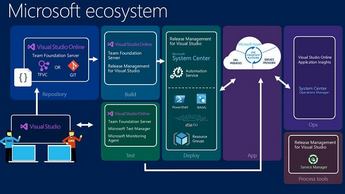






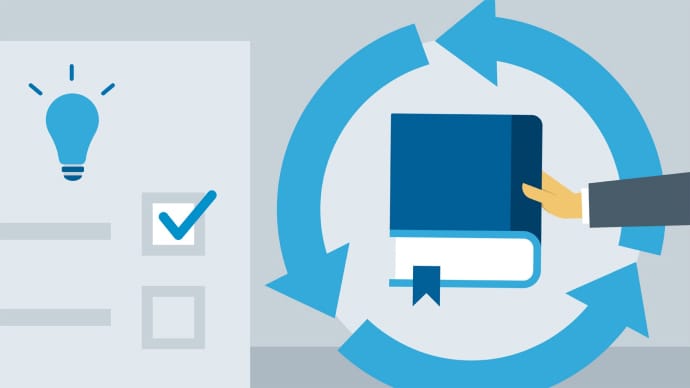
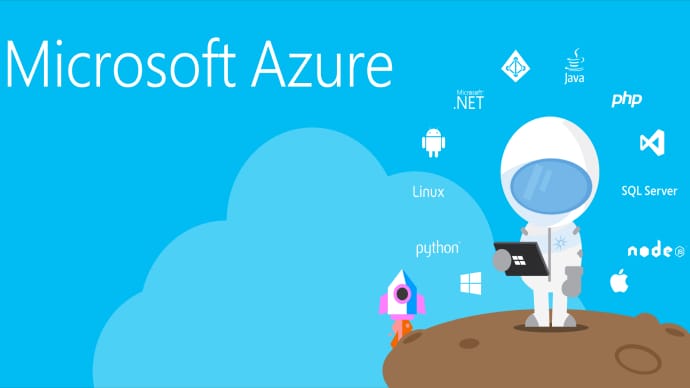


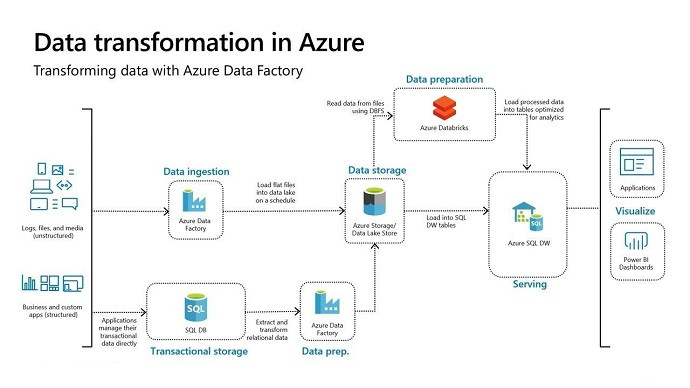









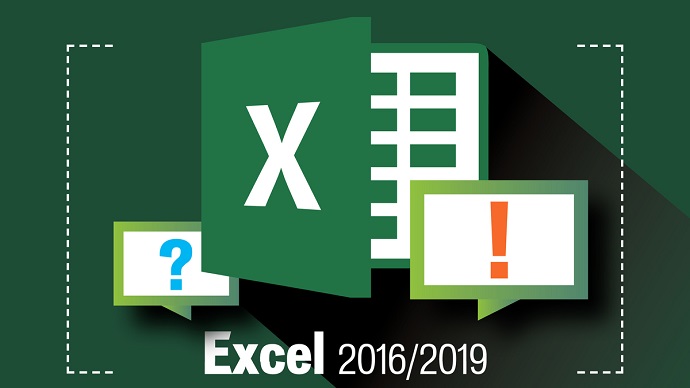





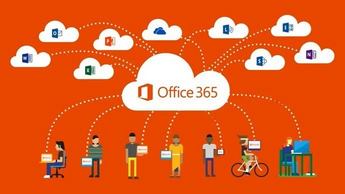










Only Registered Members can View Training Courses
Please fill out your email address below in order to view Training Courses. Registration is Free and Easy, You Simply need to provide an email address.
- Trusted by 1.2M IT Certification Candidates Every Month
- Hundreds Hours of Videos
- Instant download After Registration






